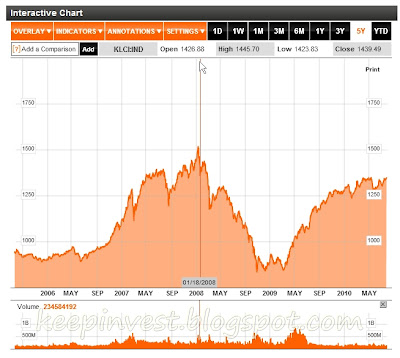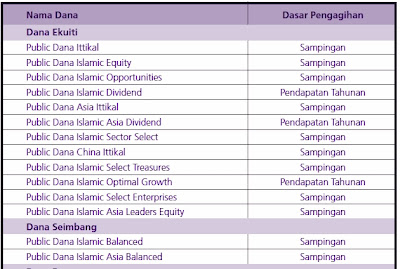Staying the Course in the Long Run (source: UTCConnect) Similar to how the slow and steady tortoise beats the hare in the race, the investor who remains focused on long-term goals is more likely to achieve better risk adjusted returns than the investor who has a short-term horizon.
Short-term market movements are unpredictable and in times of major swings, are often driven by sentiments of excessive pessimism or irrational exuberance.
In view of the volatile nature of the stock markets, investors should be focused on riding through market cycles by having a medium- to long-term investment horizon of at least three to five years.
In addition, investors can better withstand the impact of market volatility on their investments by investing a fixed amount of money on a regular basis. This strategy is widely known as Ringgit Cost Averaging (RCA), which ensures that you buy more units of an investment when prices are low and fewer units when prices are high. Ultimately, the investor achieves a lower average cost which translates into a higher return when the market recovers.
Take Advantage of Market Downturns
RCA is, in fact, quite an effective strategy during bear markets or volatile market conditions for long-term investors. A strategy of continuing to invest a fixed amount of money when markets are sold down should enable investors to accumulate undervalued shares. Mark Mobius, emerging markets fund manager of Templeton Asset Management Ltd, once said in a Fortune magazine interview: “Investors should dollar-cost-average by investing a fixed amount on a regular basis, and hang in there. No one knows if the markets are going up, down, or sideways.”
By viewing market declines as great buying opportunities, you can enhance your long-term return potential when the market eventually rebounds. Historically the Malaysian market has trended upward over the long run and investors who bought when prices were relatively low will generally be rewarded when prices rebound. Thus, investors are advised to practice a disciplined investing strategy such as RCA to take advantage of the volatility in the markets.
Staying Invested May Prove Rewarding Over the Long-Term
There has been no proven method of predicting which direction the market will move over the short-term period. Nevertheless, some people still try to time market movements by selling their investments when they think the market is about to decline, and by buying in when they think the market is about to rise.
By trying to time the market, you potentially miss out on market rallies that could substantially improve your overall return and long-term wealth. Thus, what is most important is
not timing the market, but rather
staying invested and focused on the long-term investment objectives.
Conclusion
Over the past few years, investors have seen a number of shocks and disruptions to global financial markets caused by various economic and geopolitical factors. Markets may also react dramatically in response to specific events.
Getting – and staying – prepared for difficult times, however, is often a determining factor for long-term success.
Seasoned investors know that in the long run, markets have shown remarkable resilience in times of crisis. For instance, in the recent global financial crisis, stock markets fell sharply in 2008 with the FTSE Bursa Malaysia Kuala Lumpur Composite Index (KLCI) (FBM KLCI) falling by 39.33 percent. However, markets started to rebound strongly from March 2009 onwards with the FBM KLCI registering a one-year return of 51.35 percent as at March 31, 2010.
Investors who are disciplined, well-invested, opportunistic and diversified will have a greater degree of confidence that their investment goals will be achieved.
In comparison, sentiment-driven investors who have short-term goals may have panicked during the market’s sharp sell-down in late 2008 and redeemed their unit trust investments, turning an unrealised loss into a realised loss. If they held on to their investments and continued to practise RCA, they would be able to minimise their losses and possibly achieve positive returns.
Riding the Bulls and Bears
Over the past 32 years, the local stock market has experienced its fair share of ups and downs. Since 1976, the FBM KLCI, which proxies the local market, has generated positive returns in 21 years. Out of those, the FBM KLCI’s gains exceeded 10 percent in 15 out of the 21 years. In comparison, the FBM KLCI declined in 11 years since its inception, with losses ranging between 0.84 percent (2005) and 51.98 percent (1997). Nevertheless, the KLCI enjoyed annualised returns of 6.81 percent per annum since 1976 despite the major market correction in 2008. Over the period, the market was volatile but generally moved in an upward direction in tandem with Malaysia’s economic growth and increase in market capitalisation of listed companies.
Q:So when is the best time to invest?
That is a question no one, not even the experts, can answer due to the volatile nature of the markets. In fact, it is quite common for some investors to enter the market at the start of a bull market while others join in when the market hits its peak and is poised for a correction. These investors would have incurred losses in times such as the 1997/98 Asian financial crisis. However, investors who practice RCA when markets were volatile would be able to partially mitigate the sharp sell-down during bear markets.
short word: Just keep invest consistently or even start with a small values


